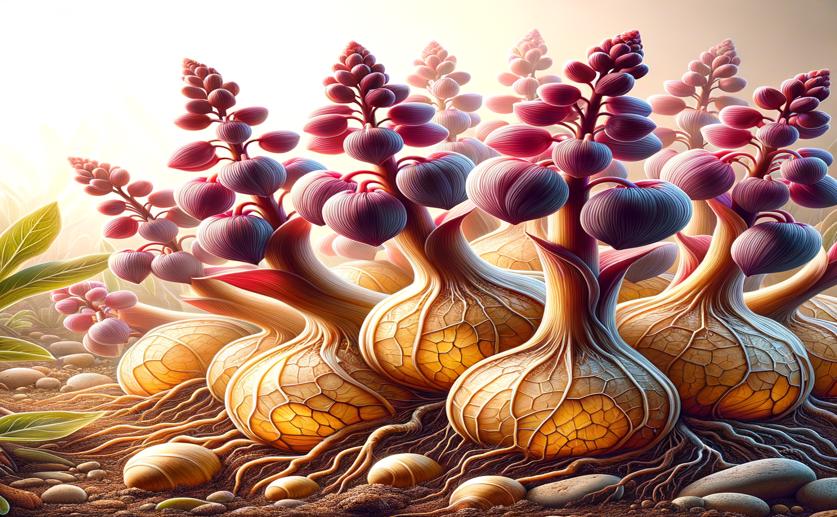
How Corydalis Yanhusuo Bulbs Produce Healing Alkaloids
Jenn Hoskins
24th May, 2024

Image Source: Natural Science News, 2024
Key Findings
- The study identified 702 metabolites in Corydalis yanhusuo bulbs, including 216 alkaloids
- Key genes involved in the biosynthesis of benzylisoquinoline alkaloids (BIAs) were identified
- The expression of these genes was higher during the bulb expansion stage, correlating with increased alkaloid content
References
Main Study
1) Metabolomics and transcriptomics reveal the mechanism of alkaloid synthesis in Corydalis yanhusuo bulbs.
Published 23rd May, 2024
https://doi.org/10.1371/journal.pone.0304258
Related Studies
2) Fingerprint-efficacy study of the quaternary alkaloids in Corydalis yanhusuo.
3) Alkaloid profiling of the traditional Chinese medicine Rhizoma corydalis using high performance liquid chromatography-tandem quadrupole time-of-flight mass spectrometry.
4) An isoquinoline alkaloid from the Chinese herbal plant Corydalis yanhusuo W.T. Wang inhibits P-glycoprotein and multidrug resistance-associate protein 1.
5) Qualitative and quantitative determination of ten alkaloids in traditional Chinese medicine Corydalis yanhusuo W.T. Wang by LC-MS/MS and LC-DAD.
Journal: Journal of pharmaceutical and biomedical analysis, Issue: Vol 45, Issue 2, Oct 2007



 23rd May, 2024 | Jenn Hoskins
23rd May, 2024 | Jenn Hoskins